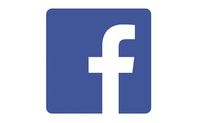In an ever-evolving digital advertising landscape, Google Ads and Meta Ads (formerly Facebook Ads) continue to be two of the most prominent platforms, each offering unique advantages for marketers. As brands navigate rising ad costs, stricter privacy regulations, and the complexities of automated systems, understanding the core differences between these platforms is essential for effective budget allocation.
Google Ads operates primarily on user intent. When someone searches for terms like "best CRM for real estate agents" or "emergency plumber near me," they are exhibiting a clear desire for solutions. This high intent translates into increased conversion potential, making Google Ads particularly effective for businesses that cater to specific needs. In contrast, Meta Ads focus on discovery, placing ad content in front of users who may not be actively searching for products but can be persuaded to engage. This makes Meta ideal for brand awareness campaigns and products that rely on impulse buying.
Choosing the right platform hinges on understanding your goals and the behaviors of your target audience. For instance, Google Ads is often the go-to choice for industries with high search volume and purchase intent, such as legal services and home improvement. These sectors frequently see cost-per-click (CPC) rates soaring above $6.50 for home services and exceeding $8.50 for legal services, reflecting the intense competition and high stakes involved.
Conversely, Meta Ads excel in fostering demand and are particularly effective for e-commerce brands that offer visually appealing products. Campaign types like Advantage+ Shopping, combined with dynamic product ads, can lead to immediate sales, especially when strong creative assets are employed. The 2024 Facebook Ads benchmarks reveal a significantly lower average CPC of $1.88 across all industries, making Meta a more budget-friendly option for many advertisers.
As both platforms evolve, automation plays a critical role in optimizing campaigns. Google’s Smart Bidding and Meta’s Advantage+ automate much of the optimization process, from placements to bidding strategies. However, marketers must remain vigilant. Without a clear structure and reliable creative inputs, automation can sometimes lead to wasted budgets rather than enhanced performance.
In 2025, the advertising landscape is shifting. Short-form video formats, such as YouTube Shorts and Instagram Reels, are gaining traction, often outperforming static ads in reach and cost efficiency. This trend underscores the need for brands to adapt their creative strategies to capture attention in a crowded marketplace. Moreover, first-party data has become increasingly vital for effective targeting, with both Google’s Customer Match and Meta’s Conversions API requiring robust data inputs to maximize performance.
When allocating budgets between Google Ads and Meta Ads, there is no one-size-fits-all formula. It’s essential to evaluate your budget based on objectives, funnel stages, product types, and customer behaviors. If your target customer is actively seeking a solution, such as a personal injury lawyer or an enterprise SaaS tool, Google Ads should capture a significant portion of your budget—often 70% or more. This is because paid search effectively captures high-intent traffic at the moment of need.
On the other hand, if your focus is on building a brand, Meta Ads may warrant a larger share of your budget. This platform thrives in categories where brand identity and storytelling drive consumer consideration. For instance, brands launching new products or entering competitive markets often allocate 70% of their budget to Meta, particularly for aesthetically-driven items like skincare or fashion.
For e-commerce brands, a dual strategy often proves effective. High-ticket products that require research typically perform better on Google, while lower-priced, impulse-friendly items often see faster conversions on Meta. A balanced budget split of 50/50 can serve as a starting point, but data should guide adjustments based on performance insights.
Lead generation presents unique challenges and opportunities across both platforms. For B2B lead generation, Google Ads generally yields higher-quality leads due to the higher intent of search queries. In contrast, Meta can be more cost-effective for B2C lead generation, particularly for promotions like product waitlists or newsletter sign-ups. Depending on customer and conversion goals, budget splits for lead generation can vary from 60/40 to 40/60.
Testing is a critical component of budget allocation. Advertisers should allocate a portion of their budget to experiment with both platforms, validating which creative, copy, audiences, and formats yield the best results. A modest test campaign, perhaps around $250 split evenly between Google and Meta, can provide valuable insights that inform larger budget decisions.
Flexibility is key in today’s advertising environment. Successful brands do not adhere to rigid budget splits but instead start with a hypothesis, test rapidly, and adjust allocations based on real-time data. Seasonal trends, promotional events, and creative fatigue can significantly impact platform performance, making it crucial to remain adaptable.
The most effective advertising strategies leverage the strengths of both Google and Meta. Google Ads should be utilized for converting high-intent search traffic, while Meta Ads are ideal for building demand, launching new products, and nurturing audiences. By investing in creative assets that work across both platforms and embracing automation while maintaining oversight, brands can optimize their advertising efforts.
Ultimately, the decision between Google Ads and Meta Ads shouldn't be about choosing one over the other. Instead, advertisers should focus on building a hybrid strategy that leverages the strengths of both platforms. As the digital landscape continues to evolve, let data—not assumptions—shape your budget decisions and drive your advertising success.



